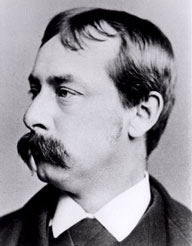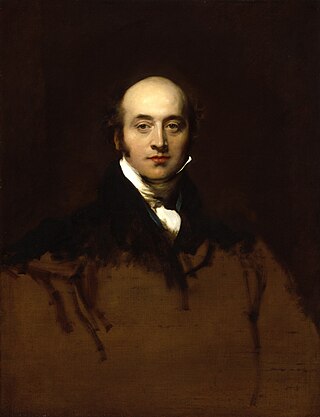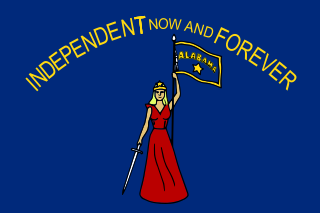
Sir Walter Scott, 1st Baronet, was a Scottish novelist, poet and historian. Many of his works remain classics of European and Scottish literature, notably the novels Ivanhoe (1819), Rob Roy (1817), Waverley (1814), Old Mortality (1816), The Heart of Mid-Lothian (1818), and The Bride of Lammermoor (1819), along with the narrative poems Marmion (1808) and The Lady of the Lake (1810). He had a major impact on European and American literature.

Francis Pharcellus Church was an American publisher and editor. In 1897, Church wrote the editorial "Yes, Virginia, there is a Santa Claus". Produced in response to eight-year-old Virginia O'Hanlon's letter asking whether Santa Claus was real, the widely republished editorial has become one of the most famous ever written.

Winfield Scott was an American military commander and political candidate. He served as Commanding General of the United States Army from 1841 to 1861, and was a veteran of the War of 1812, American Indian Wars, Mexican–American War, and the early stages of the American Civil War. Scott was the Whig Party's presidential nominee in the 1852 election but was defeated by Democrat Franklin Pierce. He was known as Old Fuss and Feathers for his insistence on proper military etiquette and the Grand Old Man of the Army for his many years of service.

Sir Thomas Lawrence was an English portrait painter and the fourth president of the Royal Academy. A child prodigy, he was born in Bristol and began drawing in Devizes, where his father was an innkeeper at the Bear Hotel in the Market Square. At age ten, having moved to Bath, he was supporting his family with his pastel portraits. At 18, he went to London and soon established his reputation as a portrait painter in oils, receiving his first royal commission, a portrait of Queen Charlotte, in 1789. He stayed at the top of his profession until his death, aged 60, in 1830.

James Robert Hope-Scott was a British barrister and Tractarian.

Edward Middleton Barry RA was an English architect of the 19th century.

Daniel Maclise was an Irish history painter, literary and portrait painter, and illustrator, who worked for most of his life in London, England.

Robert Anderson was a United States Army officer during the American Civil War. He was the Union commander in the first battle of the American Civil War at Fort Sumter in April 1861 when the Confederates bombarded the fort and forced its surrender, starting the war. Anderson was celebrated as a hero in the North and promoted to brigadier general and given command of Union forces in Kentucky. He was removed late in 1861 and reassigned to Rhode Island, before retiring from military service in 1863. In 1865, he returned to Fort Sumter to again raise the American flag that he had lowered during the 1861 surrender.

Gideon Johnson Pillow was a senior officer of the Confederate States Army in the Western Theater of the American Civil War. He previously served as a senior officer of United States Volunteers during the Mexican–American War.

James Murray Mason was an American lawyer and politician who became a Confederate diplomat. He served as senator from Virginia, having previously represented Frederick County, Virginia, in the Virginia House of Delegates.

The Fourth Sea Lord and Chief of Naval Supplies originally known as the Fourth Naval Lord was formerly one of the Naval Lords and members of the Board of Admiralty which controlled the Royal Navy of the United Kingdom the post is currently known as Chief of Materiel (Fleet). As of 2017, it is also known as Chief of Fleet Support, Chief of Materiel (Ships) then as of 2020, Director General Ships.
Military leadership in the American Civil War was vested in both the political and the military structures of the belligerent powers. The overall military leadership of the United States during the Civil War was ultimately vested in the President of the United States as constitutional commander-in-chief, and in the political heads of the military departments he appointed. Most of the major Union wartime commanders had, however, previous regular army experience. A smaller number of military leaders originated from the United States Volunteers. Some of them derived from nations other than the United States.

Alabama was central to the Civil War, with the secession convention at Montgomery, the birthplace of the Confederacy, inviting other slaveholding states to form a southern republic, during January–March 1861, and to develop new state constitutions. The 1861 Alabaman constitution granted citizenship to current U.S. residents, but prohibited import duties (tariffs) on foreign goods, limited a standing military, and as a final issue, opposed emancipation by any nation, but urged protection of African-American slaves with trials by jury, and reserved the power to regulate or prohibit the African slave trade. The secession convention invited all slaveholding states to secede, but only 7 Cotton States of the Lower South formed the Confederacy with Alabama, while the majority of slave states were in the Union at the time of the founding of the Confederacy. Congress had voted to protect the institution of slavery by passing the Corwin Amendment on March 4, 1861, but it was never ratified.

Benjamin Franklin Flanders was a teacher, politician and planter in New Orleans, Louisiana. In 1867, he was appointed by the military commander as the 21st Governor of Louisiana during Reconstruction, a position which he held for some six months. He was the second and, as of 2024, the last Republican mayor of New Orleans, Louisiana.
The Battle of Cockle Creek, October 5, 1861, was a minor naval engagement off Chincoteague, Virginia early in the American Civil War.

Fanny Ayton (1806–1891) was an English soprano known for her operatic performances in London in the late 1820s.

Cathedral of St Michael and St John is a heritage-listed Roman Catholic cathedral at 107 William Street, Bathurst, Bathurst Region, New South Wales, Australia. It was designed by Charles Hansom and built from 1857 to 1861 by Edward Gell. It is also known as Cathedral of Saints Michael and John. The cathedral is the episcopal see of the Roman Catholic Bishop of Bathurst. The property is owned by the Roman Catholic Diocese of Bathurst. It was added to the New South Wales State Heritage Register on 5 June 2012.















